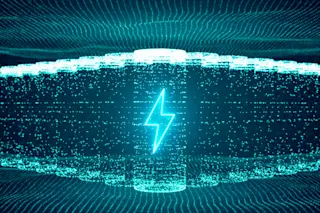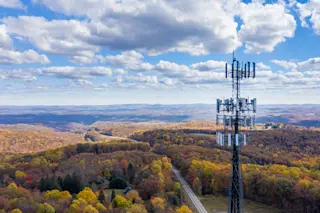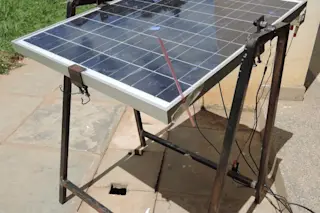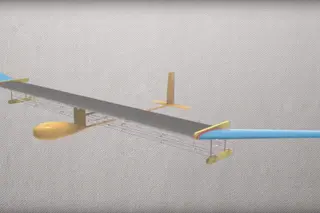Back in 1832, the celebrated British physicist, Michael Faraday, carried out a set of experiments designed to answer a tantalizing question: could electricity be generated by Earth's rotation through its own magnetic field?
The intriguing possibility arises because Earth’s magnetic field does not rotate with the Earth like a physical object. Instead, it is created at each instant and remains essentially fixed in space. So the thinking at the time was that perhaps Earth’s movement through it could generate power.
But Faraday’s experiments were a resounding failure and a few years later, physicists worked out why. Any movement of a conductor through this magnetic field does indeed produce a force on the electrons within it. But this force redistributes the electrons, generating another field that exactly cancels out the effect of the original one. So if the entire power-generating circuit lies within the field, nothing happens.
But there is a loophole in this reasoning, say Christopher Chyba, at Princeton University in New Jersey and colleagues. In 2016, they pointed out that it assumes the magnetic field changes almost instantaneously in the conducting material.
But in certain kinds of “soft” magnetic materials, changes in the field diffuse through it more slowly. And when that happens, it may be possible to exploit the effect to generate power using conductors with carefully shaped geometries.
Now Chyba and co have shown that such a conductor can extract electrical energy directly from Earth's rotation through its own magnetic field.
Their experiment is relatively simple. It turns out that one geometry that ought to work is a cylindrical shell attached to a circuit. They manganese-zinc ferrite, as the "soft" magnetic material with the necessary magnetic diffusion and crafted it into a cylindrical shell, about the size of a large flashlight.
Their theory predicts that the shell should generate power — a few microvolts and associated current — when it is oriented perpendicular to the Earth’s movement. That this should drop to zero when the shell is rotated 90 degrees so it is parallel to the Earth’s movement. And that when the shell is rotated a further 90 degrees, the power should increase again, but with the current and voltage in the opposite direction.
In carefully controlled laboratory experiments, that’s exactly what the team of researchers obaerved. “This small demonstration system generates a continuous DC voltage and current of the (low) predicted magnitude,” noted Chyba and colleagues.
By contrast, a similarly-sized solid cylinder showed no measurable voltage at any orientation.
Critically, the team controlled for various confounding effects, such as thermoelectric voltages caused by temperature gradients and external electromagnetic interference. They performed the experiment in their lab, where conditions can be carefully controlled and in a nearby residential location, where conditions were less easily controlled. In both sets of tests, the result was the same — the set up produced a small amount of power extracted from the Earth’s rotation through its own field.
That’s interesting work with significant implications. Although the power output is small, scaling this technology could lead to specialized power-generation methods for remote sensing installations.
“Even if only voltages far below those for residential power were achievable using our effect, such devices might still have practical applications as “batteries” that would require no fuel and could not wear out in the usual sense,” say Chyba and colleagues.
One intriguing possibility to boost voltages is to miniaturize the cylindrical shells and make arrays of them connected in series. And in scenarios with greater relative velocity to the magnetic field — such as satellites orbiting Earth — significant power generation could be achievable.
Power Scaling
Chyba and colleagues point out that generating power in this way would inevitably slow Earth’s rate of rotation but that the effect would be tiny. “Even in an extreme scenario where our civilization somehow would obtain all its electrical energy from the effect described here, Earth’s rotation would slow by <1 millisecond per decade,” they say.
By comparison, the length of Earth’s day naturally fluctuates by several milliseconds per decade. “Earth is also despinning due to exchange of angular momentum with the Moon, lengthening Earth’s day currently by 2.5 milliseconds per century,” they say.
But first, other groups will need to confirm the effect elsewhere. “The next step would be for an independent group to reproduce (or contradict) our results,” say Chyba and co.
If they are successful, it’s not hard to imagine the commercialization of this technology in the not-too-distant future.
Ref: Experimental demonstration of electric power generation from Earth's rotation through its own magnetic field: www.arxiv.org/abs/2503.15790














